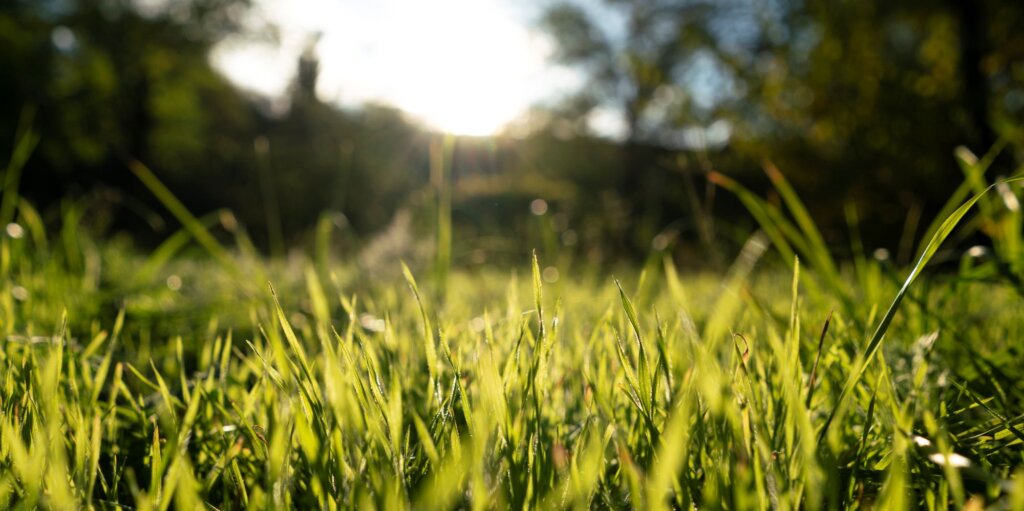If your lawn looks patchy, compacted, or struggles to stay green no matter how much you water and fertilize, the problem may not be what you’re adding. Instead, look to what your soil isn’t getting.
Over time, soil can become compacted from foot traffic, heavy rainfall, and even regular mowing, which makes it harder for air, water, and nutrients to reach the roots. Lawn aeration breaks up compacted soil and creates a better environment for healthy grass to thrive.

What Is Lawn Aeration?
Lawn aeration is the process of perforating the soil with small holes to allow better airflow, water absorption, and nutrient penetration. This helps loosen compacted soil, giving grassroots more room to grow and improving overall lawn health. The two main types of aeration are:
- Core Aeration – Uses a machine to remove small plugs of soil, allowing for deep penetration of water and nutrients.
- Spike Aeration – Involves poking holes in the soil with spikes, but it doesn’t remove soil cores, making it less effective for severe compaction.
The Benefits of Lawn Aeration
A well-aerated lawn can lead to noticeable improvements in both appearance and resilience. Some key benefits include:
- Stronger, Deeper Roots – Aeration allows roots to grow deeper, creating a lawn that is more drought-resistant and durable.
- Improved Water Absorption – Compacted soil can cause water runoff, leading to dry patches. Aeration helps water soak in more effectively, reducing waste and promoting even growth.
- Better Nutrient Uptake – Fertilizers work more efficiently when they can reach the root zone rather than sitting on the surface.
- Reduced Thatch Buildup – Thatch is a layer of dead grass and debris that can suffocate your lawn. Aeration helps break it down naturally.
- Lusher, Greener Grass – With better access to oxygen, water, and nutrients, your lawn can grow thicker, greener, and healthier.
When & How Often Should You Aerate Your Lawn?
Timing is key when it comes to aeration. The best time to aerate depends on your grass type:
- Cool-season grasses (commonly in northern lawns) benefit from aeration in early fall or early spring.
- Warm-season grasses (commonly in southern lawns) should be aerated in late spring or early summer when they are actively growing.
For most lawns, aeration once a year is enough to maintain healthy soil. However, if your yard sees heavy foot traffic, has clay soil, or has drainage issues, you may need to aerate twice a year.
Should You DIY or Hire a Professional?
While renting an aerator and tackling the job yourself is entirely possible, hiring a professional can guarantee even coverage and great results. Lawn care professionals have specialized equipment and experience, which makes the process quicker and more effective—especially for larger yards or severely compacted soil.
Lawn aeration is one of the best things you can do to improve the health of your grass. By relieving soil compaction and allowing nutrients to reach the roots, aeration helps create a greener, more resilient lawn that requires less water and maintenance. If your grass is looking lackluster, aerating might be the simple solution.
This article is for informational purposes only and does not contain professional lawn care or landscaping advice.
